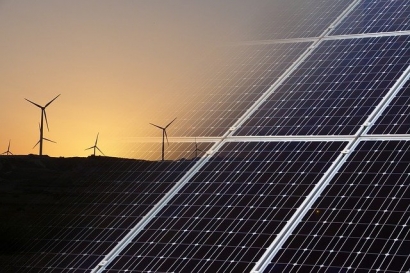
Though Wisconsin substantially lags its Midwest neighbors in clean energy production, Governor Evers signed an Executive Order in 2019 calling on the state to reach 100% carbon-free electricity by 2050. Wisconsin’s major utilities have already committed to significant investments in wind and solar energy production. With the state needing to install an additional 8 GW of productive capacity beyond currently planned developments to achieve its 2050 objectives, MEPI and FERC researchers examined the potential impacts of these investments.
“Every $1 billion spent on clean energy delivers a stronger return in the form of economic activity and fiscal outcomes than comparable investments in fossil fuels,” said study coauthor and FERC Director Dr. Russell Kashian. “However, the data shows that such impacts rely on a policy framework that can develop enough adequately skilled workers for these jobs and maximize those returns.”
Based on figures from the U.S. Department of Energy, researchers found that the total cost of adding the 8 GW of additional wind and solar energy production capacity (assuming most come from utility-scale wind farms and solar arrays) that would be needed to reach Wisconsin’s 2050 goals would total $9.8 billion, or $390 million per year, after accounting for federal tax credits. This would translate to an added cost per electricity consumer of less than $4 per month, and would leave Wisconsin with the 12th-cheapest utility rates in the country, 13% below the national average.
Using industry-standard IMPLAN modeling based on U.S. Census data, researchers projected the investments would grow Wisconsin’s economy by $824 million, generate $77 million in tax revenues, and create 1,400 jobs every year.
Though data from Public Service Commission (PSC) of Wisconsin reveals that 86% of the construction on Wisconsin’s clean energy projects since 2001 have been performed by local workers, researchers cautioned that any economic benefits from future construction of clean energy infrastructure would be linked to the labor practices of developers.
Specifically, they analyzed comparable utility scale solar projects—a phase one project in Iowa County that primarily employed nonunion construction workers from out of state, according to documents filed with the PSC, and a planned Wood County project by Alliant Energy that has selected a union construction manager.
“While the overall size and cost of these projects will be virtually identical, our analysis shows that the economic and fiscal impacts depend on who is hired to build them,” said MEPI Policy Analyst and study coauthor Andrew Wilson. “By using mostly nonlocal workers who will do most of their consumer spending out-of-state, the WEC Energy project is projected to create 63% fewer jobs for Wisconsin residents, deliver 28% (or $91 million) less in terms of economic output, and generate 13% less in state and local tax revenues.”
As recent news reports have detailed, clean energy project workers face a substantial pay penalty relative to installation workers in the more heavily unionized fossil fuel industry. Noting the workforce supply challenges that contractors around the country are reporting to industry organizations such as the Associated General Contractors of America (AGC), researchers concluded that labor standards were not just a matter of maximizing the economic benefits of clean energy projects, but of competitiveness in an increasingly tight labor market.
“Research consistently shows that prevailing wages, project labor agreements, and responsible bidder ordinances improve the quality of construction jobs—resulting in increased local hiring, stronger apprenticeship systems that boost the supply of workers with skills for in-demand careers, and more workers earning market-competitive wages,” said MEPI Executive Director and study coauthor Frank Manzo IV.
“Labor comprises less than 10% of total clean energy project costs, and these standards offset higher wages and training investments, by delivering stability in the labor supply pipeline that these projects depend on as well as improved safety and productivity outcomes on the jobsite.”
Manzo added that under the Investment Tax Credit provisions included in the Build Back Better Act (BBB) which recently passed the U.S. House of Representatives, a clean energy transition guided by strong labor standards could actually reduce Wisconsin’s clean energy project costs by as much as 26%. That’s because the proposed law increases the Investment Tax Credit for clean energy installation projects from 6% to 30% for project owners who pay their workers prevailing wages and utilize registered apprentices for 15% of their workforce.

